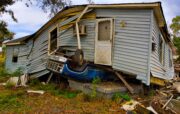Cloud-based tool provides clear communication for disaster situations
Filling an unmet need, ‘Panacea’s Cloud’ allows first-responders to effectively communicate in disaster situations when traditional communication methods are not available
September 10th, 2019
COLUMBIA, Mo. – When a manmade or natural disaster, such as a tornado or hurricane, hits a populated area, communication devices such as cell phones are often impacted, leading to a reduction or inability to communicate for the first responders deployed in the immediate aftermath. A collaboration of researchers at the University of Missouri is hoping to provide better communication to first responders during that crucial time.
“In situations where there is no cell phone signal, you can take our device — protected in a custom waterproof and crushproof case — and set up clear communications within a range of one or two city blocks, or we can set up multiple devices for communication in a larger, more regional setting,” said Prasad Calyam, associate professor of electrical engineering and computer science and the director of the Cyber Education and Research Initiative in the MU College of Engineering.
Dubbed “Panacea’s Cloud,” this self-contained communication tool is a collaboration between Calyam and Salman Ahmad, an assistant professor of surgery in the MU School of Medicine and medical director of the Trauma and Surgical Intensive Care Unit. The tool provides support — wireless internet, a phone network, and internet-based data storage and processing — for first-responders in a disaster situation who are operating from separate organizations, allowing them to communicate in one cohesive manner.
Utilizing smart technology, such as eyewear, Panacea’s Cloud will give first-responders the ability to relay real-time information, such as location, to other responders on the scene or medical professionals nearby. Data — such as real-time, high-definition video streams — will populate a dashboard, allowing agencies to select and filter the most relevant information from the scene, such as an emergency room learning the extent of injuries for incoming patients. The dashboard was subjected to a real-life exercise and showed high usability for those who would benefit most from using this tool.
“This system is useful for FEMA and other federal agencies because they want to improve training and protocols for disaster response,” Calyam said. “This device can also be used for medical triage, search and rescue and campus safety, such as university police departments.”
Calyam said a commissioned market research study in collaboration with EMS1.com provided the researchers with 1,700 responses from first responders who confirmed and validated that this communication tool is an unmet need in their profession.
The team of researchers including Calyam, Ahmad, Duo Jiang, Rui Huang, John Gillis, Olivia Apperson and Dmitrii Chemodanov from MU, and Faith Demir from Northern Illinois University presented this research at the 2019 Seventh IEEE International Conference on Mobile Cloud Computing, Services and Engineering in San Francisco, California. The work was supported by a National Science Foundation Award (CNS-1647182) and the Coulter Foundation. The content is solely the responsibility of the authors and does not necessarily represent the official views of the funding agencies.
Editor’s Note: For more on the story, please see: Panacea’s Cloud ready for prime time



 Photos (2):
Photos (2):